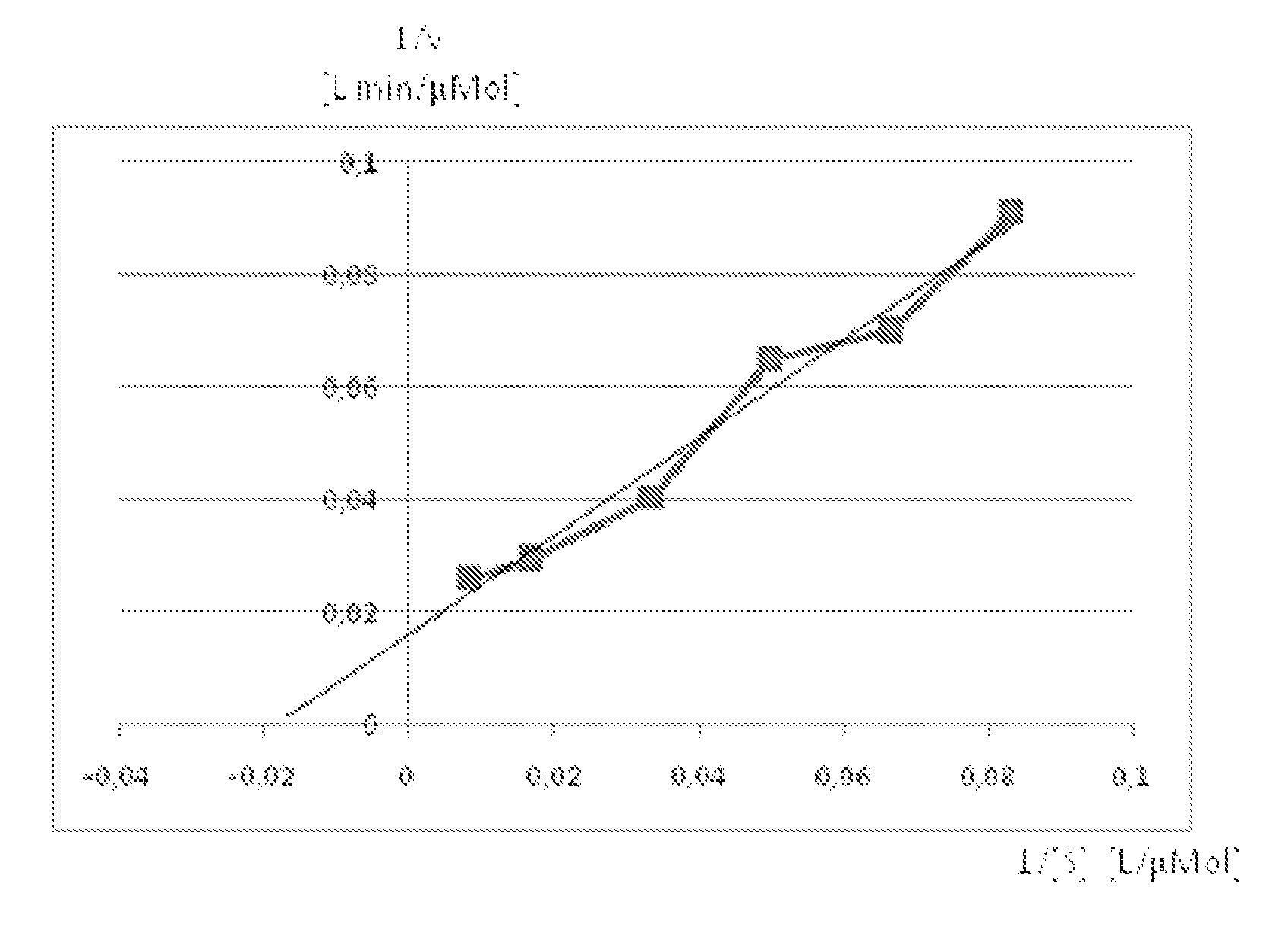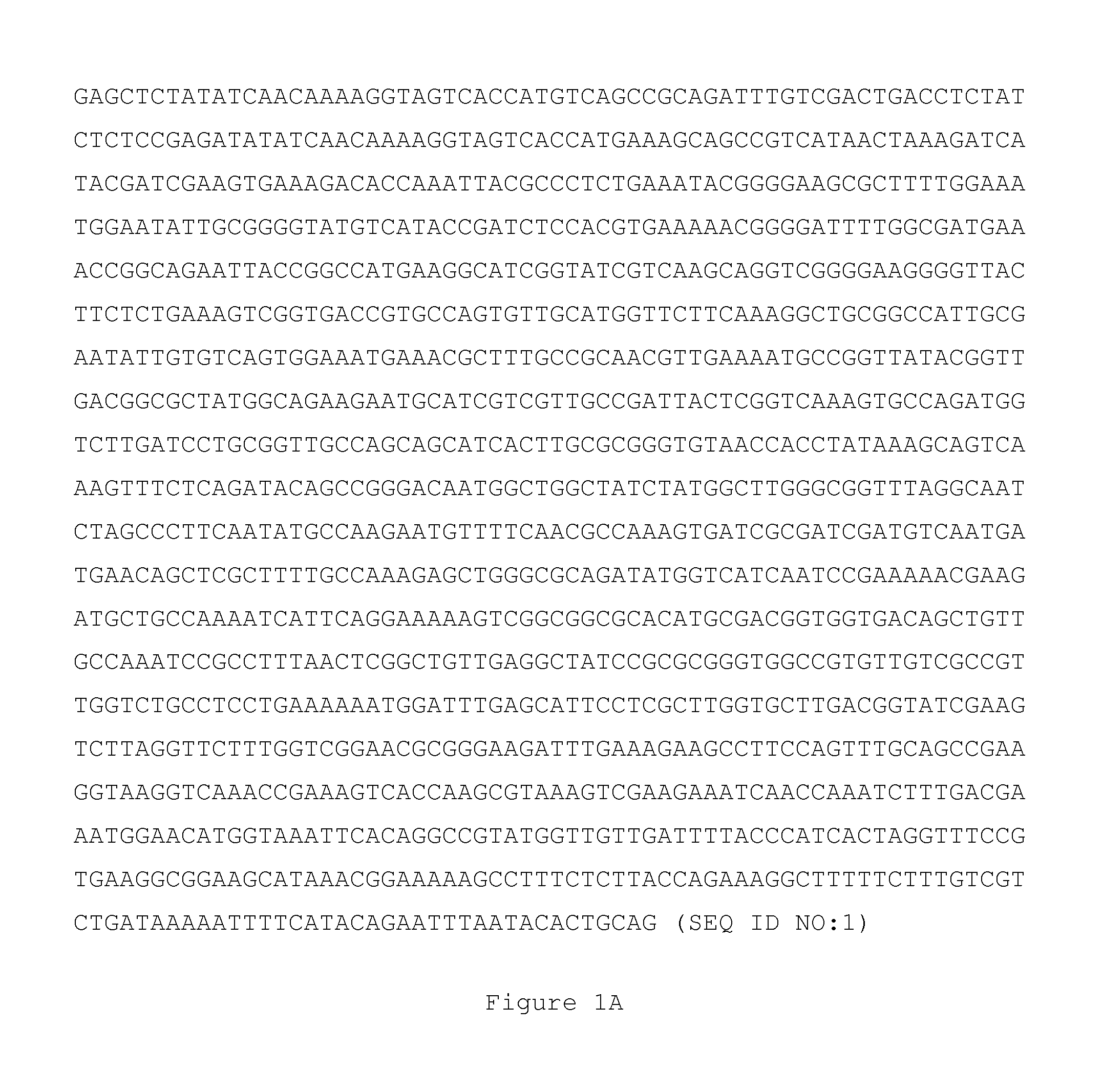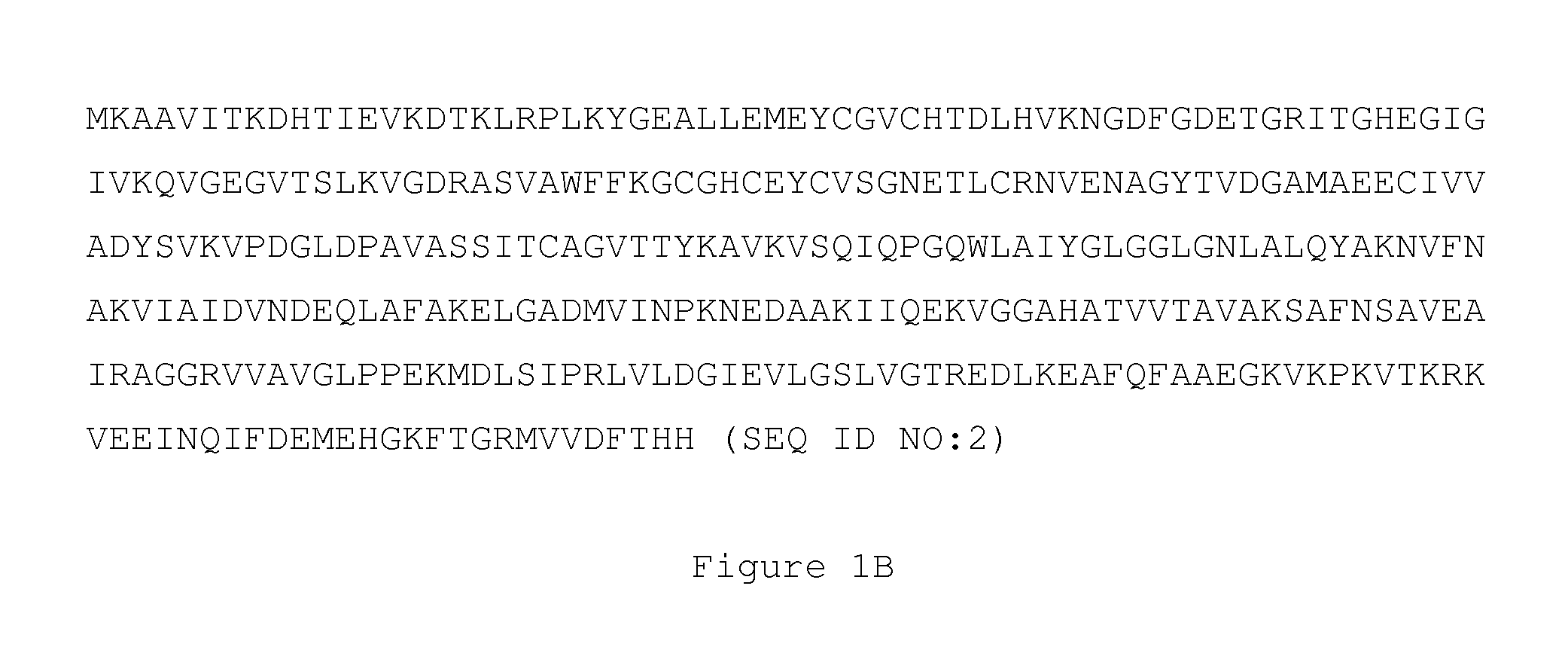Selection of ADH In Genetically Modified Cyanobacteria For The Production Of Ethanol
a technology of cyanobacteria and ethanol, which is applied in the direction of biofuels, microorganisms, biochemistry apparatus and processes, etc., can solve the problems of complex problem of genetic engineering, limitation of the ability to modify the genetics of specific species, and contributing to rising food prices and causing deforestation. , to achieve the effect of higher enzymatic activity
- Summary
- Abstract
- Description
- Claims
- Application Information
AI Technical Summary
Benefits of technology
Problems solved by technology
Method used
Image
Examples
Embodiment Construction
Overview
[0131]The introduction of a pyruvate decarboxylase (Pdc) and an alcohol dehydrogenase (Adh) into cyanobacteria, as disclosed by Woods et al in U.S. Pat. No. 6,306,639, enables a light driven production of ethanol in autophototrophic bacteria by directing carbon fixed via photosynthesis into ethanol production. The substrate for the Pdc enzyme is pyruvate that is converted by decarboxylation into acetaldehyde and CO2. The product, acetaldehyde, is then converted by an Adh enzyme into the desired end-product ethanol.
[0132]Woods disclosed the use of adhi and adhII from the bacterium Zymomonas mobilis. Many organisms contain adh, and there are adh enzymes with a variety of properties. The present invention discloses benefits associated with the use of adh from Synechocystis PCC6803. One benefit associated with the use of adh from Synechocystis PCC6803, relative to adh from Zymomonas mobilis, is the significantly decreased back reaction of ethanol to acetaldehyde under conditions...
PUM
| Property | Measurement | Unit |
|---|---|---|
| pH | aaaaa | aaaaa |
| optical density | aaaaa | aaaaa |
| gas chromatography | aaaaa | aaaaa |
Abstract
Description
Claims
Application Information
 Login to View More
Login to View More - R&D
- Intellectual Property
- Life Sciences
- Materials
- Tech Scout
- Unparalleled Data Quality
- Higher Quality Content
- 60% Fewer Hallucinations
Browse by: Latest US Patents, China's latest patents, Technical Efficacy Thesaurus, Application Domain, Technology Topic, Popular Technical Reports.
© 2025 PatSnap. All rights reserved.Legal|Privacy policy|Modern Slavery Act Transparency Statement|Sitemap|About US| Contact US: help@patsnap.com



